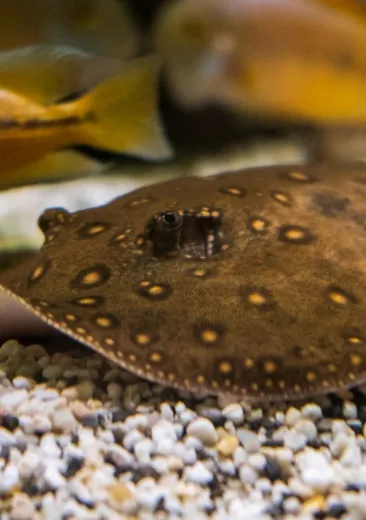And they relish spraying water at the carers as they pass within their range.
Identity card
Arapaima gigas
- Scientific name:
- Arapaima gigas
- Family:
- Osteoglossidae /Arapaimidae
- Class:
- Actinopterygii
- Phylum:
- Chordata
- Year of description:
- Schinz, 1822
- IUCN Status:
- Data Deficient
- Distribution:
-
The arapaima gigas lives in the Amazon River basin in South America.
- Habitat:
-
The arapaima gigas lives in fresh water, in the Amazon River and its large tributaries.
- Size:
The arapaima gigas measures 2.5 metres in length on average and weighs 200 kg.
- Diet:
-
It feeds on fish, but sometimes varies its menu by catching birds. It grabs them as it leaps out of the water.
- Conservation program:
It has protection and control measures in place for its trade.





